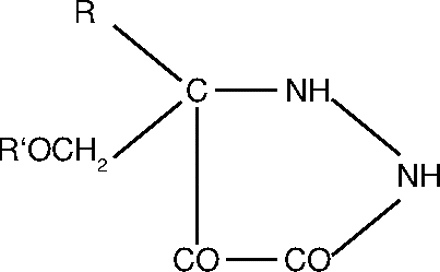
- Institution: Stanford Univ Med Ctr Lane Med Lib/Periodical Dept/Rm L109
- Sign In as Member / Individual
The Little Compound That Could: How Phenytoin Changed Drug Discovery and Development
Anticonvulsant Activity of 5-alkoxymethyl and 5-phenoxymethyl-5-alkylhydantoins
 |
||
|---|---|---|
| R | R’ | Activity* |
| Ethyl | Iso-Amyla | 0, 50b; 0, 0; 0, 135; 0, 315 |
| Iso-Amyl | Methyl | 0, 40; 0, 90; +, 140; ++++, 250 |
| Iso-Amyl | n-Propyl | 0, 20; 0, 40; 0, 65c; 0, 80; 0, 240c |
| Methyl | Phenyl | 0, 140; +++, 175d |
| Ethyl | Phenyl | +++, 140d |
| Iso-Propyl | Phenyl | 0, 87; 0, 80; 120f |
| n-Amyl | Phenyl | 0, 70; 0, 250; +, 400 |
| Iso-Amyl | Phenyle | 0, 90; 0, 125; ++++, 280;+++, 400d |
| Phenyl | Phenyl | ++++, 120; ++++, 100g |
-
↵* The anticonvulsive activity varying from 0 to ++++ is given for the dosage expressed in milligrams per kilogram of body weight of the animals.
-
↵a Henze (2) reported preliminary results which showed this compound to be unsatisfactory as a soporific.
-
↵b Reference (3).
-
↵c Convulsant. The cat given 65mg./kg. died in status a few minutes after treatment.
-
↵d Administered orally in capsules.
-
↵e Sodium salt given in aqueous solution.
-
↵f Fatal.
-
↵g Minimum effective anticonvulsant dose.
-
Table of compounds similar to phenytoin tested for anticonvulsant activity. Reprinted with permission (18).


